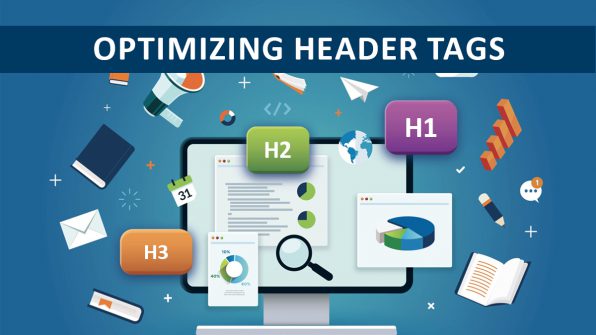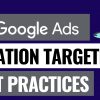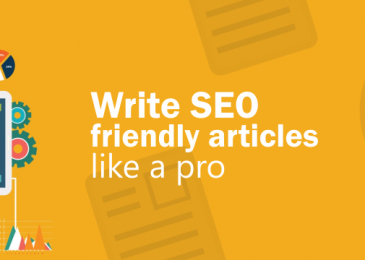Heading tags are more than just a tool for organizing content; they play a crucial role in on-page SEO and can significantly impact your website’s search engine rankings. By using heading tags effectively, you can improve user experience, enhance content readability, and signal to search engines the structure and importance of your content. In this guide, we’ll explore how to optimize heading tags (H1-H6) to boost your rankings and create a better user experience.
Understanding Heading Tags
Heading tags are HTML elements that define the structure and hierarchy of content on a web page. They range from H1 to H6, with H1 being the highest level and H6 the lowest. Proper use of heading tags helps both users and search engines understand the content and its organization.
The Role of Each Heading Tag
- H1 Tag: The Main Title
- Purpose: The H1 tag represents the main heading of a page and should describe the primary topic of the content. It is often considered the most important heading tag for SEO.
- Best Practices:
- Use only one H1 tag per page to maintain a clear focus.
- Incorporate primary keywords naturally, but ensure the title remains compelling and relevant.
- Make sure the H1 tag accurately reflects the content and aligns with user search intent.
- H2 Tag: Major Subheadings
- Purpose: H2 tags are used for major subheadings that break down the content under the main H1 heading. They help organize content into distinct sections and improve readability.
- Best Practices:
- Use H2 tags to introduce key sections or topics within the page.
- Include relevant keywords where appropriate, but prioritize clarity and relevance.
- Maintain a logical flow that guides users through the content.
- H3-H6 Tags: Subsections and Details
- Purpose: H3 to H6 tags are used for further subdivisions of content under H2 headings. They provide additional layers of structure and detail, making it easier for users to navigate complex content.
- Best Practices:
- Use H3 for subsections under H2 headings, H4 for subsections under H3, and so on.
- Maintain a hierarchical structure that reflects the organization of the content.
- Incorporate keywords in a natural way, focusing on enhancing readability.

Best Practices for Using Heading Tags
1. Maintain a Hierarchical Structure
- Logical Order: Ensure that heading tags are used in a hierarchical order, starting with H1 and moving through H2, H3, etc. Avoid skipping levels (e.g., using H3 directly under H1 without an H2) as this can confuse both users and search engines.
- Consistent Formatting: Keep the formatting consistent throughout your site to help users and search engines understand the content structure.
- Keyword Placement: Incorporate relevant keywords in your heading tags to signal to search engines what the page is about. However, avoid keyword stuffing and focus on creating headings that are meaningful and relevant to the content.
- Natural Language: Write headings in a way that naturally incorporates keywords. Ensure that they accurately describe the content and provide value to users.
3. Improve Readability and User Experience
- Clarity: Use clear and descriptive headings that make it easy for users to scan and understand the content. Headings should provide a preview of what the section is about.
- Conciseness: Keep headings concise and to the point. Avoid overly long headings that may be difficult to read and interpret.
4. Enhance Accessibility
- Screen Readers: Proper use of heading tags improves accessibility for users who rely on screen readers. Ensure that headings are used appropriately to provide a logical structure for those using assistive technologies.
- Descriptive Headings: Write headings that provide context and are descriptive enough for users to understand the content without needing to read the entire section.
Advanced Techniques for Optimizing Heading Tags
1. Implementing Structured Data
- Schema Markup: Use schema markup to provide additional context about your headings and content. This can help search engines better understand the structure of your content and may enhance how your pages appear in search results.
2. Conducting A/B Testing
- Test Variations: Experiment with different heading tag formats and keyword placements to see what performs best. A/B testing can help you determine which headings drive higher engagement and better rankings.
3. Analyzing Competitor Strategies
- Competitor Analysis: Review how competitors in your industry use heading tags. Analyze their structure, keyword usage, and formatting to identify opportunities for improvement in your own content.
4. Monitoring Performance
- Analytics: Use tools like Google Analytics and Google Search Console to monitor how changes to heading tags impact user behavior and search performance. Track metrics such as click-through rates and bounce rates to evaluate the effectiveness of your headings.
Common Mistakes to Avoid
- Overusing Headings: Avoid using too many headings or subheadings, which can clutter the content and make it difficult to follow. Focus on maintaining a clear and organized structure.
- Inconsistent Tag Usage: Ensure consistent use of heading tags across your site. Inconsistent or incorrect usage can confuse search engines and users.
- Ignoring User Intent: Write headings with user intent in mind. Headings should address the needs and interests of your audience, not just focus on keywords.
Final thoughts
Heading tags are a powerful tool for organizing content and improving both user experience and search engine visibility. By using H1-H6 tags effectively, you can create a clear content hierarchy, enhance readability, and signal the importance of various sections to search engines. Implement best practices such as maintaining a logical structure, using relevant keywords, and improving accessibility to maximize the impact of your headings. Regularly monitor and adjust your heading tag strategies to ensure they continue to support your SEO goals and deliver value to your users.




